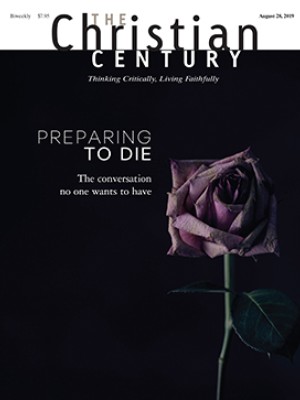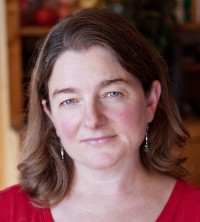Four people, one church
Cara Wall writes beautifully about something novelists rarely address: a mainline Protestant congregation.
Here is a rare find: a novel that is not only compelling and thoughtfully written, made of beautiful sentences and tenderly created characters, but that is also about an aspect of American life rarely treated these days in fiction: the mainline Protestant church.
First-time novelist Cara Wall tells the story of two ministers and their wives, who are called to a large Presbyterian church in New York City in the early 1960s and spend their lives ministering there. Each individual in the foursome gets equal treatment—their stories, their inner lives, their histories, and their perceptions of each other are handled like a cube that is slowly turned over in the reader’s hands. They become increasingly interconnected, until they realize that “there was only one call. They were, the four of them, married to each other, in a strange way. They had turned in their quarters, and the church had given them a silver dollar.”
Read our latest issue or browse back issues.
But it takes a long time for this foursome to develop. Nan and James—one of the pairs—meet in Chicago. Her father is a beloved minister in a small southern town. He comes from a family afflicted with alcoholism, poverty, and the effects of PTSD. The other pair, Lily and Charles, meet in Boston. Her life is most profoundly shaped by the death of her parents in a car accident, and his by a father who is an academic all-star at Harvard and rejects his son’s ministerial calling.
James is a firebrand who wants to change the world. Charles is cooler and more thoughtful, a good student of people and theology. Nan describes the difference between herself and Lily this way: “She was soft; Lily was straight. She wavered; Lily was plumb.” Of the four of them, Lily wants the least to do with the church. She is not a Christian, and she wants her own life apart from the church. Each of the four have to grapple with Lily’s resistance to their shared life.
The book has two centers, like the two couples. One is the struggle between faith and doubt. Lily is an unbeliever, and James is unconventional in his belief. In an early moment in their ministry together, James tries to tell Charles how he understands his work. “I believe in the urge to be good, to stay good, to do good in the world . . . But I don’t think God exists in the way people would like to believe; I don’t think God saves the day. I think it’s up to us. We know the rules, and we’re the ones who have to play the game.”
Charles expresses his own faith differently, “I believe in God. I think God gives us wisdom, infinite numbers of entirely different ways to understand the world. It’s an absolutely clear feeling for me, like walking into a room full of books all opened to exactly the page I want to read.” Nan’s growth in faith is perhaps the most dramatic, as she reckons with a God that she believes, at first, does good things for people who try to be good. Her faith has to change as life makes increasingly difficult demands.
In her treatment of these different orientations to faith, Wall is remarkably respectful of each. She allows each of the four to reckon with their own orientation to faith without pressing the reader to judge. Lily’s rejection of faith is held as seriously as Nan’s embrace of it. James’s evolution is as profound as Charles’s.
The other center of the book is social change, especially the change in racial dynamics that accompany the four of them—who are all white—as they begin their ministries. The beginnings of the civil rights movement shape the couples’ early choices, especially James and Nan. They decide not to go back to Nan’s hometown in Mississippi because her father writes to her, “People we know are saying such terrible things, Nan, doing such inconceivable things. You wouldn’t recognize them.”
In New York, James and Charles begin to make choices for the congregation that lead, inevitably, to conflict. In this sense, the book takes up the question of how to use power for good. How do you find a voice to speak from the pulpit into the political and social moment without alienating those who turn to you for comfort in the midst of the struggles of their lives? Not a few pastors will recognize the moment when James and Charles are called before congregational leaders to answer for what one or the other of them said from the pulpit. And anyone who has ever spent time in a church will recognize the behind-the-scenes maneuvering that takes place in an effort to save them.
The church that Charles and James copastor is, in many ways, not the church of today. Third Presbyterian does not have the financial straits that so many congregations now face. It has a staff that stays at the church for life and congregants who do the same. The pastors have the time to forge intricate relationships against the backdrop of a social stability that feels almost unrecognizable in our era. But in the last sermon quoted in the book, Charles urges people to find meaning in the “quality of your struggle with each other.” That advice is as valuable today as it was 60 years ago.







